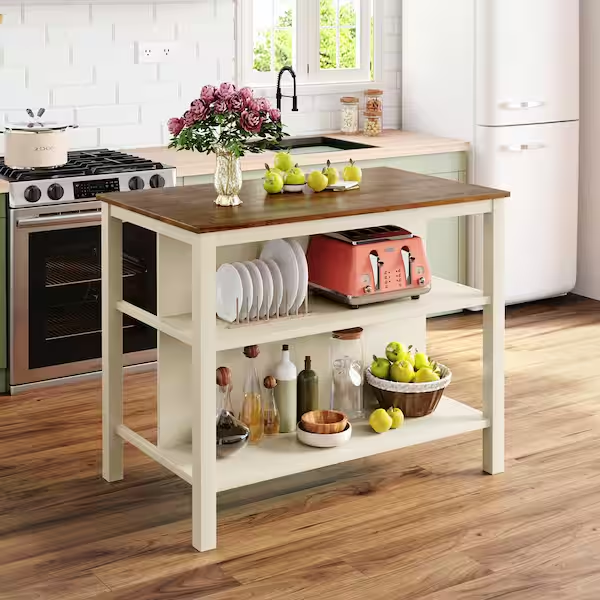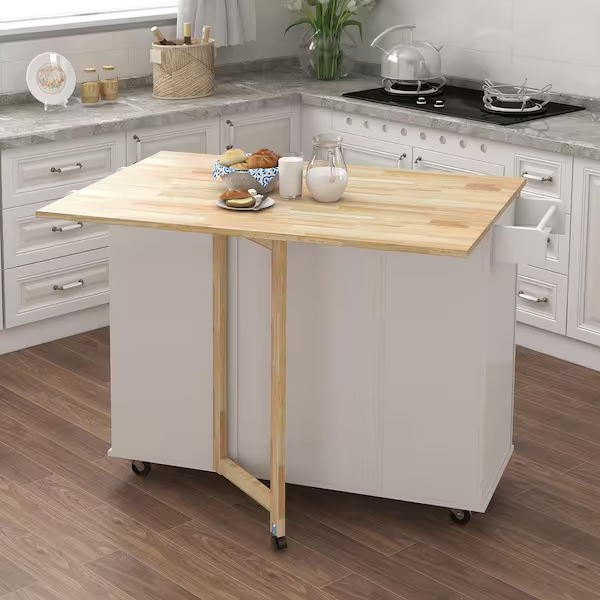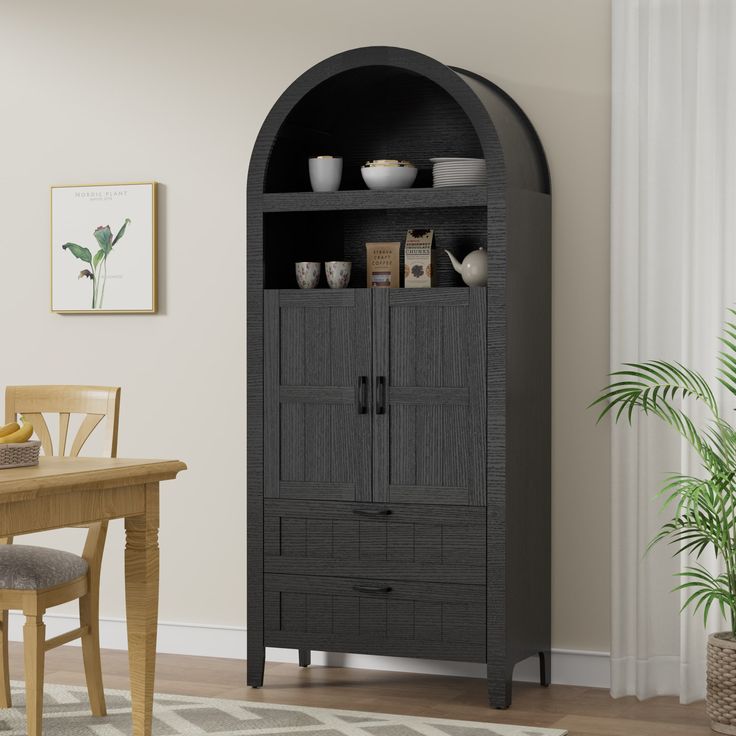In the heart of modern kitchens, the island kitchen table has emerged as a versatile and functional centerpiece. More than just a place to prepare meals, it serves as a hub for culinary creativity, social gathering, and casual dining. This article delves into the various aspects of island kitchen tables, exploring their benefits, design considerations, and how to incorporate them into your home.
Benefits of an Island Kitchen Table
- Enhanced Functionality: Island kitchen tables offer ample counter space for meal preparation, cooking, and serving. They provide a convenient spot for chopping, mixing, and plating food, streamlining the culinary process.
- Increased Storage: Many island kitchen tables incorporate drawers, cabinets, or shelves, offering additional storage space for kitchen utensils, cookware, and ingredients. This helps to keep your kitchen organized and clutter-free.
- Social Hub: Island kitchen tables create a gathering place for family and friends. They facilitate conversation and interaction while meals are being prepared or enjoyed, fostering a sense of community and togetherness.
- Casual Dining: The island kitchen table often serves as a casual dining area, providing a relaxed and comfortable setting for quick meals or informal gatherings. It eliminates the need for a separate dining table, saving space in smaller kitchens.
- Improved Kitchen Layout: By strategically placing an island kitchen table, you can create a more efficient and functional kitchen layout. It can serve as a natural divider between the cooking and dining areas, improving workflow and reducing congestion.

Practical Considerations
When choosing and using an island kitchen table, it’s essential to consider practical factors that will ensure its functionality and longevity.
Maintenance
- Materials: Different materials require varying levels of maintenance. For example, natural stone may need sealing, while stainless steel requires regular cleaning.
- Cleaning: Choose easy-to-clean materials and surfaces to simplify maintenance.
- Sealing: If using natural materials like wood or stone, ensure they are properly sealed to protect against stains and moisture.
Electrical Outlets
- Power Supply: Ensure there are sufficient electrical outlets in or near the island to accommodate appliances like blenders, mixers, or coffee makers.
- Cord Management: Consider using cord management solutions to keep electrical cords organized and prevent tripping hazards.
Lighting
- Task Lighting: Adequate lighting is crucial for meal preparation and other tasks. Consider installing under-cabinet lighting or pendant lights above the island.
- Ambient Lighting: Overall kitchen lighting should complement the island’s lighting to create a balanced atmosphere.
Ventilation
- Cooking Odors: If cooking on the island, ensure proper ventilation to eliminate cooking odors and maintain a pleasant environment.
- Hood or Fan: Consider installing a range hood or ceiling fan above the island to improve air circulation.
Plumbing
- Sink or Waterline: If incorporating a sink or waterline into the island, consult with a plumber to ensure proper installation and functionality.
- Waste Disposal: Consider adding a garbage disposal to the island sink for convenient waste disposal.
Storage
- Storage Solutions: Utilize built-in storage options like drawers, cabinets, or shelves to keep the island organized and clutter-free.
- Accessibility: Ensure that storage features are easily accessible and functional for your needs.
Accessibility
- Clear Pathways: Ensure there is adequate clearance around the island to allow for easy movement and access to other areas of the kitchen.
- Seating Height: Choose bar stools or counter height chairs that are comfortable and match the height of the island.
Safety
- Sharp Objects: Keep sharp knives and other utensils safely stored to prevent accidents.
- Hot Surfaces: Use pot holders or oven mitts when handling hot items on the island.
By considering these practical factors, you can ensure that your island kitchen table is both functional and enjoyable to use.

Design Considerations for Island Kitchen Tables
- Size and Shape: The size and shape of your island kitchen table should be carefully considered to fit your available space and meet your specific needs. Rectangular, square, or L-shaped islands are common options. Ensure there is adequate clearance around the island for comfortable movement.
- Material: Island kitchen tables are available in a variety of materials, including wood, stone, stainless steel, and composite materials. Choose a material that complements your kitchen’s overall style and is durable enough for daily use.
- Seating: Consider the number of people who will be using the island kitchen table and select the appropriate seating options. Bar stools or counter height chairs are typically used with island tables. Ensure the seating height is comfortable and matches the height of the table.
- Storage Features: If you need additional storage space, look for island kitchen tables with built-in drawers, cabinets, or shelves. Consider the type of storage you require and the accessibility of the features.
- Electrical Outlets: To accommodate small appliances like blenders, food processors, or coffee makers, ensure your island kitchen table has electrical outlets installed. This will eliminate the need for extension cords and create a more convenient workspace.
Versatility and Multi-functionality
Island kitchen tables are renowned for their versatility and ability to serve multiple purposes within a kitchen. Beyond their traditional role as a food preparation and dining space, they can offer a variety of functions to enhance your kitchen’s functionality and lifestyle.
Casual Dining Area
- Informal Gatherings: Island kitchen tables provide a relaxed and comfortable setting for casual dining, perfect for quick meals, family dinners, or entertaining guests.
- Breakfast Nook: Create a cozy breakfast nook by placing bar stools or counter height chairs around the island.
Home Bar
- Entertainment Hub: Transform your island kitchen table into a home bar by adding bar stools, a wine rack, and a small refrigerator.
- Social Gatherings: Host cocktail parties, wine tastings, or casual gatherings around your island bar.
Homework Station
- Dedicated Workspace: Create a designated homework or study area by placing a laptop or tablet on the island and providing comfortable seating.
- Family Time: Supervise children’s homework while preparing meals or engaging in other kitchen tasks.
Craft Station
- Creative Outlet: Utilize the island’s counter space as a craft station for sewing, painting, or other creative endeavors.
- Organized Workspace: Keep your craft supplies organized in drawers or cabinets within the island.
Additional Counter Space
- Meal Prep: Provide extra counter space for preparing meals, chopping vegetables, or mixing ingredients.
- Baking Station: Set up a baking station on the island with flour, sugar, and other essential ingredients.
Serving Station
- Buffet Style: Use the island as a serving station for buffet-style meals or parties.
- Plating and Presentation: Arrange dishes and platters on the island for easy serving and attractive presentation.
Charging Station
- Device Charging: Keep your electronic devices charged and organized by placing them on the island near electrical outlets.
Plant Display
- Greenery: Add a touch of nature to your kitchen by displaying houseplants or herbs on the island.
- Indoor Garden: Create a small indoor garden on the island for fresh herbs or edible plants.
By exploring these versatile functions, you can maximize the potential of your island kitchen table and create a space that suits your lifestyle and needs.

Incorporating an Island Kitchen Table into Your Home
- Measure Your Space: Before purchasing an island kitchen table, carefully measure the available space in your kitchen to determine the maximum size that will fit comfortably. Consider the distance needed for people to move around the island and open drawers or cabinets.
- Consider Your Lifestyle: Think about how you use your kitchen and what features are important to you. If you frequently entertain guests, a larger island with ample seating might be ideal. If you prefer a more minimalist approach, a smaller island with basic storage may be sufficient.
- Choose a Style: Select an island kitchen table that complements your kitchen’s overall style. Whether you prefer a modern, traditional, or rustic aesthetic, there are options available to match your taste.
- Plan for Plumbing: If you plan to incorporate a sink or cooktop into your island kitchen table, you will need to consider plumbing and electrical requirements. Consult with a professional to ensure a smooth installation process.
- Budget: Set a budget for your island kitchen table to help you narrow down your options. Consider the cost of the material, size, and any additional features you desire.

Integration with Kitchen Design
An island kitchen table can be a focal point in your kitchen, enhancing both its functionality and aesthetic appeal. To seamlessly integrate it into your overall design, consider the following tips:
Match Your Kitchen’s Style
- Modern: Opt for clean lines, sleek materials like stainless steel or quartz, and minimalist designs.
- Traditional: Choose warm-toned woods like oak or cherry, ornate details, and classic shapes.
- Rustic: Incorporate natural materials like reclaimed wood, stone, or copper. Consider distressed finishes for a vintage look.
Consider the Flow of Your Kitchen
- Traffic Patterns: Ensure the island doesn’t obstruct foot traffic or create bottlenecks. Leave enough space around it for comfortable movement.
- Work Triangle: Position the island within the efficient work triangle (sink, stove, refrigerator) to minimize steps and improve workflow.
Choose the Right Size
- Space Available: Measure your kitchen to determine the maximum size that will fit comfortably.
- Functionality: Consider the island’s intended use. A larger island can accommodate more people for dining or provide extra counter space.
Incorporate Seating
- Bar Stools: Match the height of the bar stools to the height of the island for comfortable seating.
- Counter Height Chairs: If you prefer a more traditional dining experience, consider counter height chairs.
Add Storage
- Cabinets and Drawers: Utilize built-in storage to keep your kitchen organized.
- Shelves: Open shelves can add a touch of warmth and display your favorite kitchenware.
Lighting
- Pendant Lights: Install pendant lights above the island to provide focused illumination for meal prep and dining.
- Under-Cabinet Lighting: Add under-cabinet lighting for task lighting and to create a cozy atmosphere.
Create a Focal Point
- Backsplash: Use a unique backsplash behind the island to draw attention to the area.
- Unique Materials: Incorporate eye-catching materials like marble or glass for a standout effect.
Consider Additional Features
- Sink: A sink in the island can be a convenient addition, especially for cleanup and prep work.
- Cooktop: A cooktop in the island can create a more open kitchen layout and provide additional cooking space.
- Breakfast Bar: If space is limited, a breakfast bar can be a practical and stylish option.
By carefully considering these factors, you can integrate an island kitchen table into your design to create a functional and aesthetically pleasing space.

The island kitchen table has become an essential element in modern kitchens, offering a combination of functionality, style, and social interaction. By carefully considering the design elements and your specific needs, you can choose an island kitchen table that enhances your culinary experience and creates a welcoming gathering space in your home.



